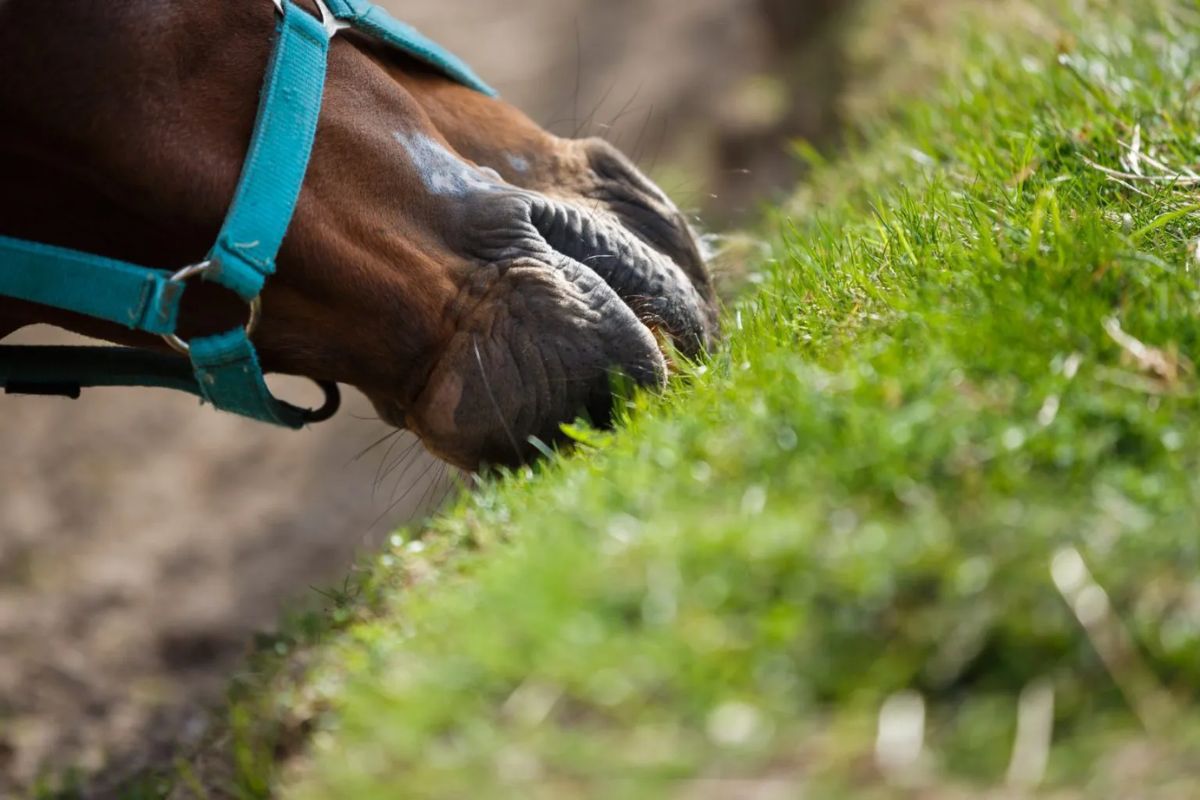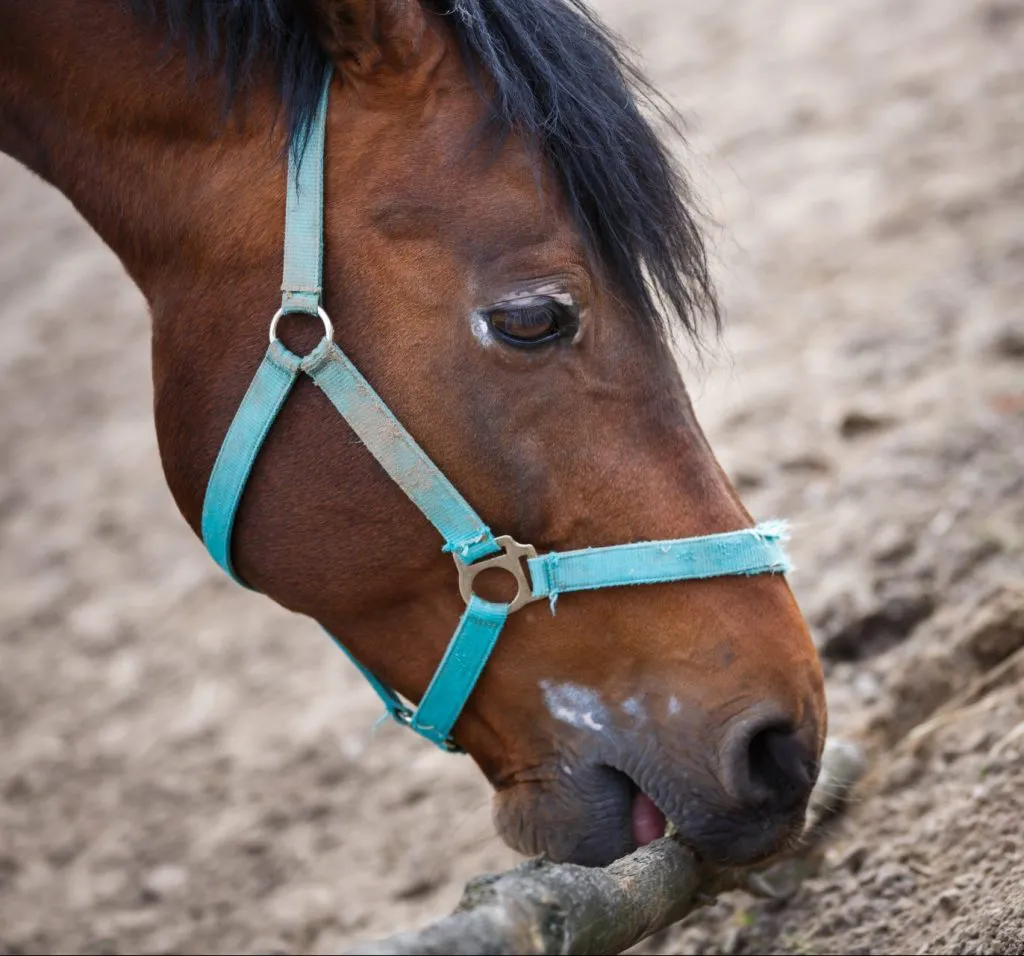Menu

By nature, the horse is equipped with an incredibly keen sense of taste and smell. With these sharp senses, it can seek out food and determine what's good for it. But did you know that its senses can actually be compared to those of a dog and a human? Here, veterinarian Heidi Nielsen explains how these two senses work and what the horse really uses them for. We should also emphasize that the horse should always be allowed to use them.
When it comes to the horse's sense of smell, it's actually just as good as a dog's, explains Heidi Nielsen. Inside the horse's nose is a labyrinth of cartilage, and in the back part of the nasal cavity's cartilage, the outer wall is covered with the so-called olfactory epithelium, which is a mucous membrane. From the mucous membrane, smells are sent via nerve pathways to the brain and to olfactory bulbs inside the brain. Here, the smells are analysed, allowing the horse to assess what is good for it to consume. The horse's olfactory nerve is built in such a way that smells captured with the left nostril are sent directly to the olfactory bulb on the left side - and the same happens on the right side, Heidi explains.
A horse has in the outer part of the nose what is known as the vomeronasal organ. It's used to capture a wide palette of scent impressions. The organ is located in the hard part of the palate with an opening out into the nostril - and in this way, the organ connects the olfactory nerve from one end to the other.
"The horse's olfactory nerve is built in such a way that smells captured with the left nostril are sent directly to the olfactory bulb on the left side - and the same happens on the right side"
Veterinarian Heidi Nielsen
The horse uses its sense of smell to find friends and mates, sense dangers, recognize territory and last but not least, to find and select food. Horses can through the sense of smell detect if their food is good or bad. Therefore, horses generally do not eat feed that is mouldy or plants that are poisonous. As a horse owner, however, you should always be on the lookout for poisonous plants, Heidi says. Sometimes poisonous plants can have a chemical structure which means that they smell like they are edible to the horse.
Read also: Mud fever: Do’s & dont's – step by step
A horse can enhance its sense of smell by pulling its upper lip back in a motion called flehmen. When the horse flehmens, the smell gets closer to the vomeronasal organ, where the scent is sensed. A horse most often flehmens if it senses a smell that it has not encountered before or if the horse finds the scent very interesting, Heidi explains. The horse is not smiling when it does this, as many people might think.

The horse can taste sweet, salty and sour with its very well-developed sense of taste. The taste sense is, just like in humans, very closely linked with the sense of smell, and therefore the horse uses both its smell and taste senses when it needs to assess whether the feed is of good or poor quality. A horse will generally never eat hay and feed if it is mouldy. The horse's taste buds are primarily located on the horse's tongue and in some parts of the soft part of the palate.
A horse's taste buds are like small nests of cells hiding in the tissue of the tongue. Here they communicate with the oral cavity using small taste pores, where the fluid from the mouth seeps down and stimulates the so-called taste receptor cells.
In addition, it's the horse's saliva that dissolves the feed. Once the feed is liquefied, it can seep down into the taste pores, further down to the taste cells and from there be perceived by nerve cells.
The taste buds have small hair cells that all register what the horse tastes. Underneath them are small glands that constantly secrete fluid that cleans the taste buds, so they are always ready to take in new information. When horses bite and lick things, it helps them via the sense of taste to form an impression of whatever we present them with, Heidi explains. This is, for example, the reason why a horse will often lick almost anything after eating.
Because the horse's senses are a natural part of its way of understanding the world, it's important that we let it use them. So don't interrupt your horse while it's eating, and always let it smell, look at and consider things and matters it's uneasy about, using all the senses it needs. In the end, that's how you get the most well-functioning horse.